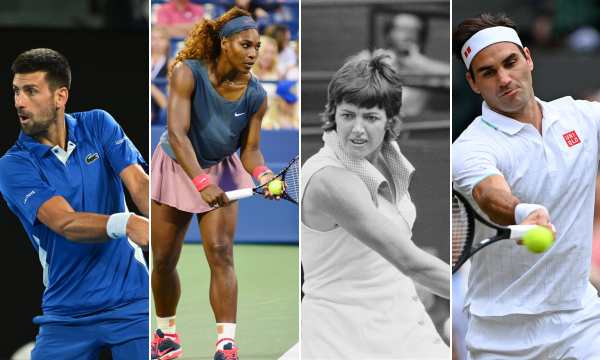Australian Open: Get to Know the World’s Most Charming Tennis Tournament
The Australian Open is a tournament that combines summer weather, a festive atmosphere, and top-level tennis.
Anúncios
Among the four Grand Slams, the Australian tournament has earned the reputation of “Happy Slam” for its contagious energy and relaxed environment.
Held at Melbourne Park during the last two weeks of January, the Australian Open marks the exciting start of the major tournament season.
Come discover why this is considered the most charming and welcoming tennis tournament on the world circuit.
Discover the Glamour of the First Grand Slam of the Year
The annual Grand Slam is inaugurated by the Australian Open with an unmistakable style that blends sporting excellence and cultural celebration.
Unlike other Grand Slams, this tournament has cultivated a relaxed personality that earned it the affectionate nickname “Happy Slam”.
Players often mention the welcoming environment and impeccable organization as factors that make this tournament special.
The proximity between the public and players creates memorable moments of interaction rarely seen in other elite tournaments.
The night sessions on the tournament courts are especially magical, when the day’s heat gives way to pleasant nights under the stars of the southern hemisphere.
The Australian Open has established itself as much more than a sporting event – it is a celebration of the Australian summer and the passion for tennis.

Stefani-and-Matos-win-the-2023-Australian-Open-(Source-Google)
The Structure of the Most Charming Tennis Tournament
The Australian Open follows the classic Grand Slam format, with 128 players in the main men’s and women’s draws.
The singles competitions are played best of five sets for men and best of three sets for women.
The qualification process allows emerging talents to earn their place among the elite of world tennis.
In addition to the singles competitions, the tournament features men’s, women’s, and mixed doubles, as well as junior and wheelchair tournaments.
The daily schedule generally starts at 11 a.m. on the outer courts, often extending into the early hours on the main arenas.
Competitive structure of the Australian Open:
- 128 players in the main draws (men’s and women’s singles).
- 64 doubles teams in each category (men’s, women’s, and mixed).
- 3 rounds of qualifying with 128 participants competing for 16 spots.
- Junior (under-18) and wheelchair tournaments.
- Legends competitions and special exhibitions.
The draw, held the week before the tournament starts, always generates great anticipation among fans and players.
The Iconic Courts That Make History
The heart of the Australian Open beats in its impressive arenas, led by the magnificent Rod Laver Arena.
This main court, with a capacity of 14,820 spectators, honors the Australian tennis legend and has witnessed unforgettable moments in the sport. Its retractable roof, installed in 1988, was a pioneer among the Grand Slams.
The second-largest arena was named after Margaret Court, holds 7,500 fans, and also features retractable roof technology.
The John Cain Arena (formerly Melbourne Arena) completes the trio of covered stadiums, offering more intimate experiences with its 9,646 seats.
These three main arenas allow the tournament to continue uninterrupted even under extreme weather conditions.
The Melbourne Park complex also features 35 additional courts, including popular outer courts where fans can watch matches up close.
The iconic blue color of the Australian Open hard courts, implemented in 2008, significantly improved the visibility of the ball for players and spectators.
The connection between the courts through tree-lined walkways creates a welcoming environment that invites spectators to explore the entire complex.
The Great Players of the Australian Open
The Australian Open has been the stage for some of the most notable dynasties in modern tennis.
Novak Djokovic has established an unprecedented dominance in Melbourne, winning an impressive 10 titles between 2008 and 2023.
His special connection with the Australian courts earned him the nickname “King of Melbourne Park.”
In the women’s era, Serena Williams stood out with seven titles, demonstrating her versatility and dominance.
Australian Margaret Court still holds the absolute record with 11 titles, though most were won in the amateur era.
Other legends like Roger Federer, Rafael Nadal, Steffi Graf, and Monica Seles also built significant legacies at the tournament.
Australian tennis players carry special expectations when competing at home during the Australian Open.
Ashleigh Barty broke a 44-year drought by winning the women’s title in 2022, sparking historic celebrations.
The Australian tournament has also revealed emerging talents who later dominated the circuit, such as Naomi Osaka, whose first two Grand Slam titles came in Melbourne.

Djokovic-Williams-Court-and-Federer-(Source-Google)
Traditions and Curiosities of the Australian Open
Unique traditions distinguish the Australian Open in the world tennis scene.
The ball boys’ uniforms, redesigned annually by renowned designers, have become collector’s items.
Interestingly, the tournament has been held in five different cities and on two different surfaces before settling in Melbourne Park.
Until 1988, the tournament was played on grass courts, then switching to the hard surface we know today.
To cope with the extreme heat of 40°C, retractable roofs are closed, and strategic breaks are granted between points.
Spectators also receive special care with free hydration stations and cooled areas scattered throughout the complex.
Special traditions of the Australian Open:
- Welcome ceremony with recognition of Australian Aboriginal peoples.
- Special fireworks on the eve of the finals.
- “AO Kids Day” that brings young fans closer to their idols.
- Public draw of the pairings with a major event broadcast worldwide.
- Unique “Heat Stress Scale” system that measures five different climatic factors.
Constant innovation keeps this tournament at the forefront of world tennis.
Epic Matches That Made History
Some of the most dramatic and memorable clashes in tennis history have been fought at the Australian Open.
The 2012 final between Novak Djokovic and Rafael Nadal went down in history as the longest Grand Slam final, stretching for an incredible 5 hours and 53 minutes.
The exhausted players could barely stand during the awards ceremony. In 2017, the tournament witnessed the improbable return of Roger Federer, who won his 18th Grand Slam title after six months away due to injury.
His epic victory over Rafael Nadal in the final, overcoming a deficit in the fifth set, is considered one of the greatest displays of resilience in the sport.
In the women’s tournament, the 2003 final between the Williams sisters provided an important chapter in their family rivalry.
Serena defeated Venus in three contested sets, consolidating her rise to the top of world tennis.
Emotional moments also include Jennifer Capriati’s victory over Martina Hingis in 2002, under extreme heat of 46°C.
The Australian Open has also recorded memorable farewell moments, such as the emotional tribute to Andy Murray in 2019 and Serena Williams’ last participation in 2022.
Tactics and Strategies: What Makes Australian Tennis Unique
Specific player adaptations are required to overcome the strategic challenges that the Australian Open presents.
The medium-fast hard courts favor players with powerful serves and assertive baseline shots. The extreme heat during competitions completely transforms athletes’ tactical approach.
Energy management becomes as important as technique, with shorter points often being favored to preserve physical endurance.
Players prepared for these conditions often train in special climate chambers before the tournament.
The night sessions present another tactical challenge: the significant change in playing conditions when the temperature drops.
The ball tends to become slower and less responsive, requiring technical adjustments from players competing under the floodlights.
Australian tennis traditionally values versatile players capable of transitioning between offensive and defensive styles.
This philosophy is reflected in the Australian Open, where consistent champions like Djokovic demonstrate exceptional adaptability to the diverse conditions presented throughout the tournament.
What to Expect from the Australian Open 2026
The 2026 Australian Open promises to be a historic edition, marking important anniversaries and innovations in the tournament.
The competition will celebrate 120 years since its first edition in 1905, with commemorative events recalling the rich history of Australian tennis.
Organizers plan special tributes to the legends who built the legacy of the first Grand Slam of the calendar.
The new multi-purpose arena with a capacity for 5,000 spectators will be fully integrated into the complex, offering an even more immersive experience for fans during the two weeks of competition.
Technologically, the 2026 Australian Open will set new standards for sports broadcasts, with augmented reality cameras and personalized experiences through the official tournament app.
Spectators will be able to access real-time statistics, choose camera angles, and participate in interactive activities while watching the matches.
The tournament’s prize money in 2026 is expected to exceed the historic mark of 100 million Australian dollars, consolidating its status as one of the most lucrative sporting events in the world.
Final Considerations
The Australian Open represents the perfect balance between the century-old tradition of tennis and the constant innovation that keeps the sport relevant to new generations.
The continuous evolution of the Melbourne Park facilities demonstrates the organizers’ commitment to continuously improving the experience for everyone involved in the tournament.
The diversity of champions throughout history reflects the democratic and accessible character of the event, which celebrates both established icons and new talents.
Over more than a century, the Australian Open has transcended its role as a sporting competition to become a global celebration of tennis, Australian culture, and values of excellence, inclusion, and innovation.
The tournament continues to provide magical moments that inspire generations of fans and players around the world.
FAQ
What are the differences between the Australian Open courts and other Grand Slams?
How does the tournament manage the time zone difference for global audiences?
How many types of tickets are there for the Australian Open?
Can I visit the courts and facilities outside the tournament period?
What was the largest audience ever recorded at the Australian Open?
 WTA Tennis: A Complete Guide to the Current Women’s Circuit
WTA Tennis: A Complete Guide to the Current Women’s Circuit
WTA: the circuit that revolutionized women’s tennis worldwide! Anúncios This professional circuit has transformed athletes into global icons and redefined standards in women’s sports. Each season, […]
Keep reading Learn All About the ATP: The Elite of Men’s Tennis in 2025
Learn All About the ATP: The Elite of Men’s Tennis in 2025
Discover how the ATP has transformed men’s tennis into a professional and highly competitive global circuit. Anúncios Today, the Association of Tennis Professionals represents the pinnacle […]
Keep reading Serena Williams: The Journey and Records of the Tennis Legend
Serena Williams: The Journey and Records of the Tennis Legend
Serena Williams transformed women’s tennis with a powerful playing style that we had never witnessed on professional courts. Anúncios More than an extraordinary athlete, she became […]
Keep reading